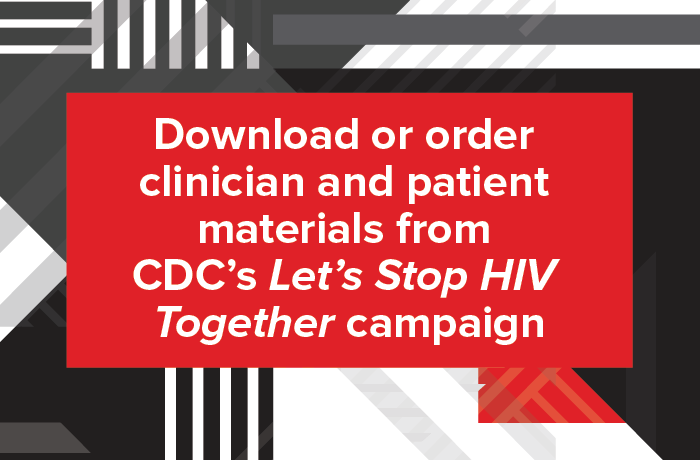Taking a Sexual History
Disclosing sexual history may be particularly sensitive for transgender people because of prior experiences of discrimination in health care.
Experts from The Fenway Institute suggest that providers may find it helpful to keep the following points in mind when taking a sexual history from transgender people:
- Providers can ask patients for their gender pronouns simply by inquiring, “What name and pronouns would you like us to use?” or “I would like to be respectful—how would you like to be addressed?” In addition, providers can ask what terms they use for their bodies or specific body parts.
- As with all patients, consider assuring transgender people that the questions being asked are important for their medical care and well-being. Providers can also remind them that the answers will be kept confidential.
- It is important to avoid assumptions about patients’ sexual orientation or the gender or gender identity of their partners. Transgender people may be of any sexual orientation, and their partners may be cisgender men or women or other transgender people.
- In addition, as with all patients, it is crucial to avoid assumptions regarding the types of sexual activity (e.g., oral, anal, vaginal, or no sexual activity at all) that transgender people engage in. Providers can begin to elicit this information with open-ended questions. Whether or not the patient is taking hormonal therapy and/or has undergone surgeries may affect the answers to these questions.
- Some transgender people, specifically transgender women, engage in sex work,2 often because employment discrimination limits other avenues for making a living, or they receive nonmonetary items such as food, drugs, or shelter. This is often called “survival” sex.3 Consider asking sexually active patients if they have ever exchanged sex for money or other goods, and make sure to avoid any body or language cues that may be perceived as judgmental.
- Although HIV and other sexually transmitted diseases (STDs) disproportionately affect transgender women compared to other populations, some transgender women may not be sexually active or may be in long-term, mutually monogamous relationships and thus have a low risk of HIV and other other STDs. Health care providers should not assume that a patient is at high risk on the basis of gender identity; rather, risk assessment should be based on each individual’s sexual history. In addition, integrating the assessment of social determinants of HIV (e.g., employment status, food security, housing, insurance status, social exclusion, stigma) with sexual history shows that health care providers see the whole patient as someone whose health is multifaceted, thereby building trust and a basis for comprehensive care planning.
- Transgender people may be at any stage of the transition process when seeking care. Some may not be taking hormonal therapies or have had surgery. Others may be using hormones but not have had surgery, and still others may have undergone one or more surgeries. For transgender women, surgeries can include facial cosmetic procedures, breast augmentation, orchiectomy, and the creation of a neovagina. For transgender men, surgeries can include facial cosmetic procedures, mastectomy and chest reconstruction, hysterectomy, bilateral salpingo-oophorectomy, and genital transformation. When medically necessary (e.g., taking a sexual history), health care providers may consider asking about current anatomy and what, if any, hormonal or surgical interventions have been undertaken.
- The following are some examples of questions addressing sexual history:
- “It’s important for me to understand your medical history in detail to provide you the best health care possible.”
- “Do you now or have you ever used hormonal therapy, including hormonal therapy not prescribed by a health care provider?”
- “Have you ever had any surgeries or other procedures? If so, tell me about the surgeries you have had.”
- In addition to asking about risk behaviors, a complete sexual history can also focus on and address any concerns about sexual function and satisfaction. Hormonal therapies tend to improve the quality of sexual experience among transgender people.4 Open discussions about therapy options can reinforce the health care provider’s commitment to supporting all aspects of transgender people’s health and facilitate both the health care process and the patient–provider relationship.
- In the process of taking a sexual history, health care providers might identify patients who are at risk of getting or transmitting HIV and other STDs. Visit HIV Risk Reduction Strategies for key strategies.
Here are some helpful questions for discussing sexual orientation and activities:
- “What types of sex do you have?” For example, ask, “Have you had any anal intercourse?” If yes, “Was it receptive? Insertive? Was a condom always used?”
- “Can I ask you a few questions about your sexual partner(s)?”
- “What do you think about using condoms?” instead of “Do you use condoms?”
- “Some of my patients find it difficult to talk to a potential sexual partner about HIV. What do you find to be the best way to disclose your HIV status?”
- Nusbaum MRH, Hamilton CD. The proactive sexual health history. Am Fam Physician. 2002;66(9):1705-1712.
- Grant J, Mottet LA, Tanis J, Harrison J, Herman JL, Keisling M. Injustice at every turn: a report of the National Transgender Discrimination Survey. Washington, DC: National Center for Transgender Equality and National Gay and Lesbian Task Force; 2011. https://www.thetaskforce.org/wp-content/uploads/2019/07/ntds_full.pdfpdf iconexternal icon. Accessed August 31, 2016.
- Centers for Disease Control and Prevention. HIV risk among persons who exchange sex for money or nonmonetary items. http://www.cdc.gov/hiv/group/sexworkers.html. Published 2016. Updated November 12, 2019.
- Murad MH, Elamin MB, Garcia MZ, et al. Hormonal therapy and sex reassignment: a systematic review and meta-analysis of quality of life and psychosocial outcomes. Clin Endocrinol. 2010;72(2):214-231.
Page last reviewed: April 1, 2020
